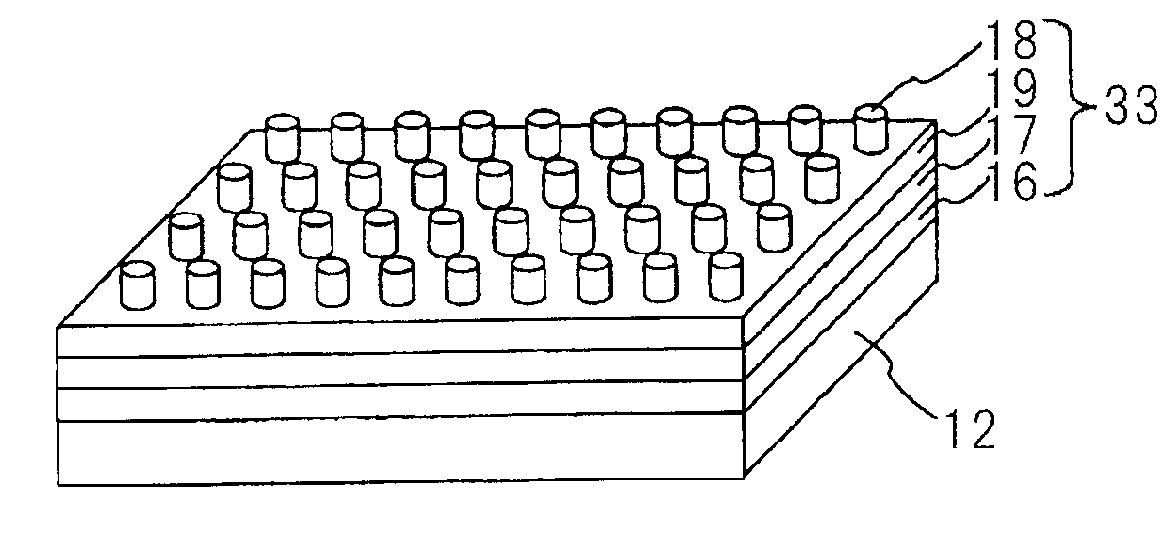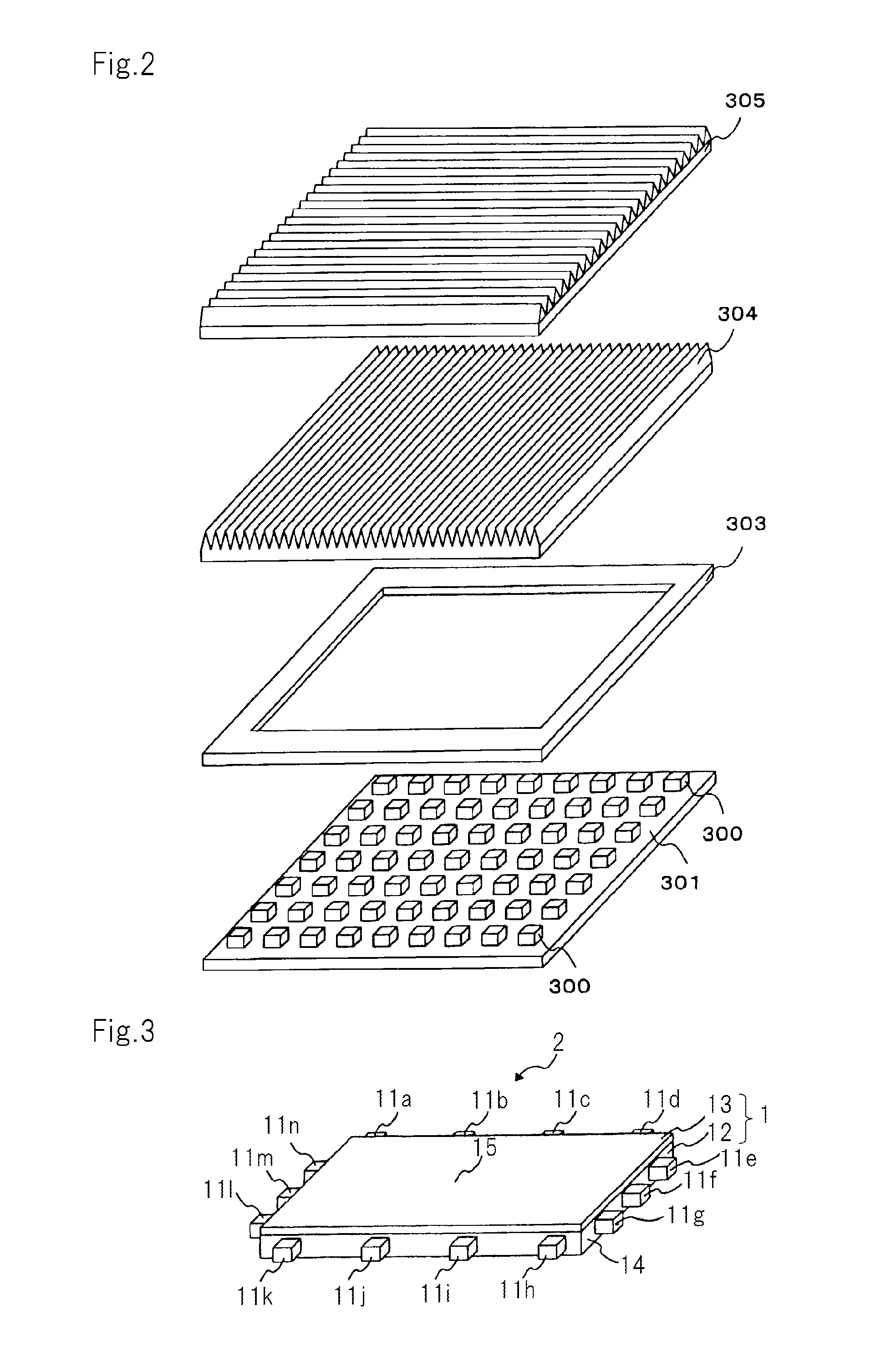Optical element, light source device, and projection display device
a technology of optical elements and light sources, applied in non-linear optics, lighting and heating apparatus, instruments, etc., can solve the problems of increasing the etendue of the light source itself, increasing the light-emitting area of the entire light source, etc., and achieve the effect of reducing the etendue of the light from the optical elemen
- Summary
- Abstract
- Description
- Claims
- Application Information
AI Technical Summary
Benefits of technology
Problems solved by technology
Method used
Image
Examples
first embodiment
[0054]FIG. 3 is a schematic perspective view showing a configuration of a light source device according to a first embodiment. FIG. 4 is an explanatory sectional view showing behavior of light in the light source device according to the present invention. In the light source device, individual layers actually have very large thicknesses, and there is a large difference in thickness among the layers. It is therefore difficult to draw the layers in accurate scale and proportion. Thus, in the drawings, the layers are not drawn in actual proportion, and hence are schematically shown.
[0055]As shown in FIGS. 3 and 4, light source device 2 according to the present embodiment includes a plurality of light-emitting elements 11 (11a to 11n) and optical element 1 into which lights output from light-emitting elements 11 enter. Optical element 1 includes light guide body 12 into which the lights output from light-emitting elements 11 enter, and directional control layer 13 for emitting output li...
second embodiment
[0084]For wave vector conversion layer 18, in place of a photonic crystal, a configuration where a microlens array is disposed, or a configuration using a layer having a rough surface can be used. FIG. 7 is a perspective view schematically showing a directional control layer included in a light source device according to a second embodiment.
[0085]As shown in FIG. 7, in directional control layer 23, wave vector conversion layer 28 including a microlens array is disposed on the surface of plasmon excitation layer 17. Even in the configuration that includes wave vector conversion layer 28 including a microlens array, directional control layer 23 can provide the same effects as those in the configuration that includes wave vector conversion layer 18 made of the photonic crystal.
[0086]FIGS. 8A and 8B are explanatory sectional views showing the manufacturing process of a configuration where the microlens array is stacked on plasmon excitation layer 17. In the configuration including the m...
third embodiment
[0090]FIG. 9 is a perspective view showing a directional control layer included in a light source device according to a third embodiment. As shown in FIG. 9, in directional control layer 33 according to the third embodiment, carrier generation layer 16, plasmon excitation layer 17, dielectric constant layer 19, and wave vector conversion layer 18 are stacked in order on light guide body 12.
[0091]Thus, the third embodiment is different from the first embodiment in that dielectric constant layer 19 is independently disposed between plasmon excitation layer 17 and wave vector conversion layer 18. Dielectric constant layer 19 has a dielectric constant set lower than that of dielectric constant layer 20 (high dielectric constant layer 20) in a fourth embodiment described below, and thus will be referred to as low dielectric constant layer 19. For the dielectric constant of low dielectric constant layer 19, a range where the effective dielectric constant of the exit side portion is mainta...
PUM
| Property | Measurement | Unit |
|---|---|---|
| thickness | aaaaa | aaaaa |
| thickness | aaaaa | aaaaa |
| thickness | aaaaa | aaaaa |
Abstract
Description
Claims
Application Information
 Login to View More
Login to View More - R&D
- Intellectual Property
- Life Sciences
- Materials
- Tech Scout
- Unparalleled Data Quality
- Higher Quality Content
- 60% Fewer Hallucinations
Browse by: Latest US Patents, China's latest patents, Technical Efficacy Thesaurus, Application Domain, Technology Topic, Popular Technical Reports.
© 2025 PatSnap. All rights reserved.Legal|Privacy policy|Modern Slavery Act Transparency Statement|Sitemap|About US| Contact US: help@patsnap.com



